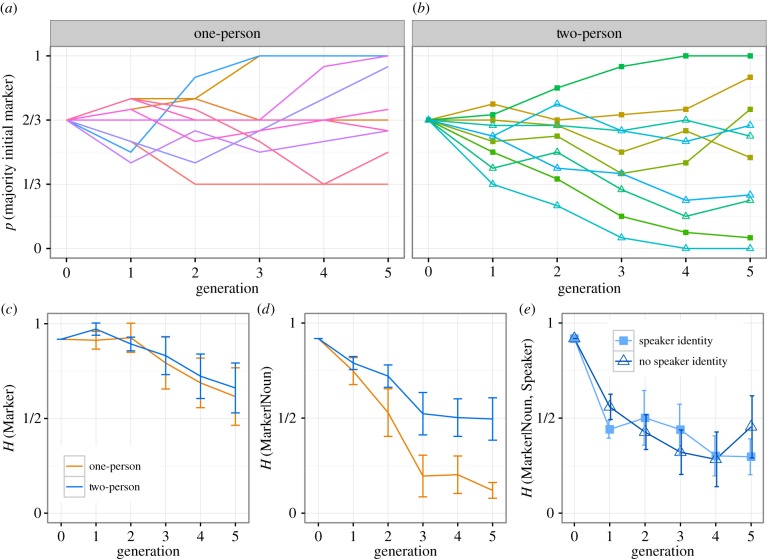Figure 4.
Experimental data. (a,b) Proportion of plurals marked using the marker that was initially in the majority in each chain. Each line shows an individual chain. For two-person chains, filled shapes indicate speaker ID provided, hollow shapes indicate no speaker ID. (c) Total entropy of the languages, as indicated by H(Marker), averaged over all chains (error bars indicate 95% CIs). Overall variability declines only slowly in both conditions: while some chains converge on always or never marking plurals with the majority initial marker, most retain variability in plural marking. (d) H(Marker|Noun), i.e. conditional entropy of marker choice given noun. In one-person chains, conditioned systems of variability rapidly emerge, as indicated by reducing H(Marker|Noun); as predicted by the model, this development of conditioned variation is slowed in two-person chains. (e) H(Marker|Noun, Speaker), i.e. conditional entropy of marker choice given the noun being marked and the speaker, for two-person chains only, split according to whether participants were provided with information on speaker identity. Contrary to the predictions of the model, providing speaker identity makes no difference to the development of speaker-specific conditioning of variation.

